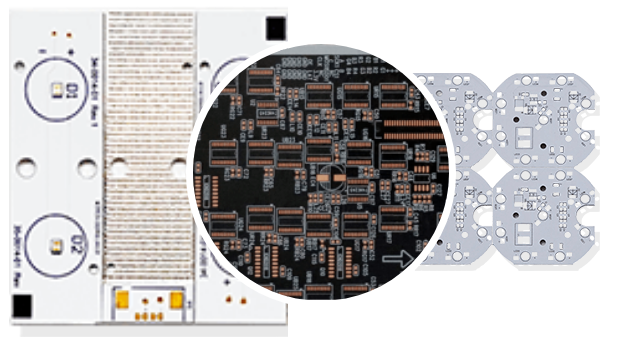Do you have doubts, why is aluminum substrate better than FR-4?
Aluminum pcb has good processing performance, can be cold and hot bending, cutting, drilling and other processing operations, to produce a variety of shapes and sizes of the circuit board. The FR4 circuit board is more prone to cracking, stripping and other problems, and it is difficult to process. Therefore, aluminum substrate is usually used in high-performance electronic products, such as LED lighting, automotive electronics, power supplies and other fields.

Of course, aluminum pcb also has some disadvantages. Because of its metal substrate, the price of aluminum substrate is higher, and it is generally much more expensive than FR4. In addition, because the aluminum substrate is not easy to bond with the pins of general electronic devices, special treatment, such as metallization, is required, which increases the manufacturing cost. In addition, the insulation layer of the aluminum substrate also requires special treatment to ensure the heat dissipation performance without affecting the signal transmission quality.
In addition to the difference in price, there are also some differences between aluminum pcb and FR4 in terms of performance and application range.
First of all, the aluminum substrate has better heat dissipation performance, which can effectively dissipate the heat generated by the circuit board quickly. This makes the aluminum substrate very suitable for high-power, high-density circuit design, such as LED lights, power modules, etc. In contrast, the heat dissipation performance of FR4 is relatively weak, and it is more suitable for low-power circuit design.
Secondly, the current carrying capacity of the aluminum substrate is greater, which is suitable for high frequency and high current circuit applications. In the high-power circuit design, the current will generate heat, and the high thermal conductivity and good heat dissipation performance of the aluminum substrate can effectively dissipate the heat, thus ensuring the reliability and stability of the circuit. The current carrying capacity of FR4 is relatively small and is not suitable for high-power, high-frequency circuit designs.
In addition, aluminum substrate seismic performance is also better than FR4, can better resist mechanical shock and vibration, so in the automotive, railway and other fields of electronic circuit design, aluminum substrate has also been widely used. At the same time, the aluminum substrate also has good anti-electromagnetic interference performance, which can effectively shield electromagnetic waves and reduce circuit interference.
In general, aluminum pcb has better heat dissipation performance, current carrying capacity, seismic performance and electromagnetic interference resistance than FR4, and is suitable for high-power, high-density and high-frequency circuit design. FR4 is suitable for general electronic circuit design, such as mobile phones, laptops and other consumer electronic products. The price of aluminum substrate is generally higher, but for high-demand circuit design, the choice of aluminum substrate is a very important step.
In summary, aluminum pcb and FR4 are suitable for different types of circuit applications and have their own advantages and disadvantages. When selecting circuit board materials, it is necessary to weigh various factors according to the specific application scenarios and requirements to choose the most appropriate materials.
Post time: Nov-30-2023







